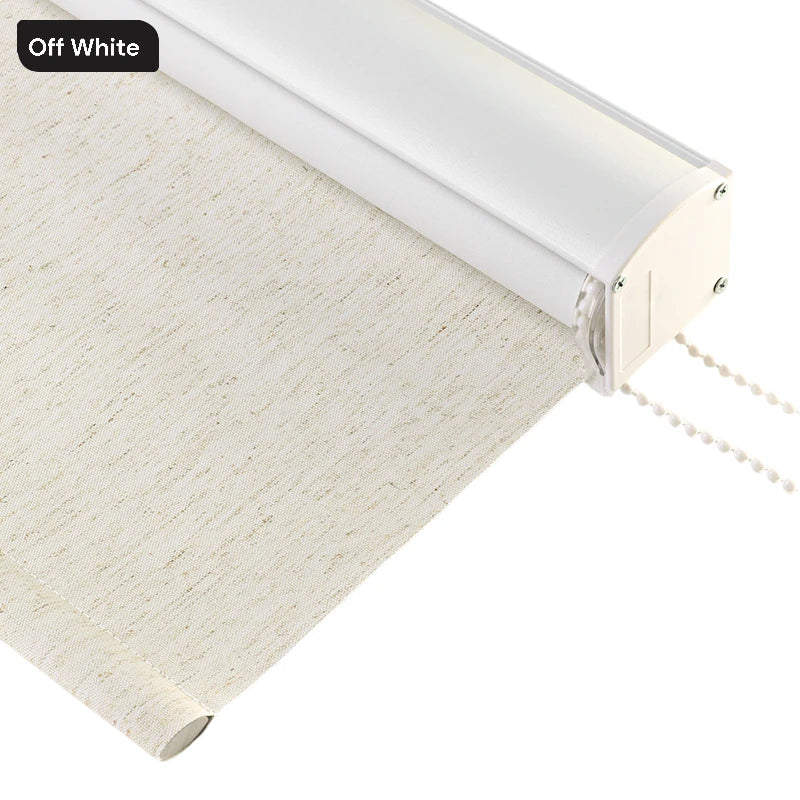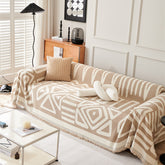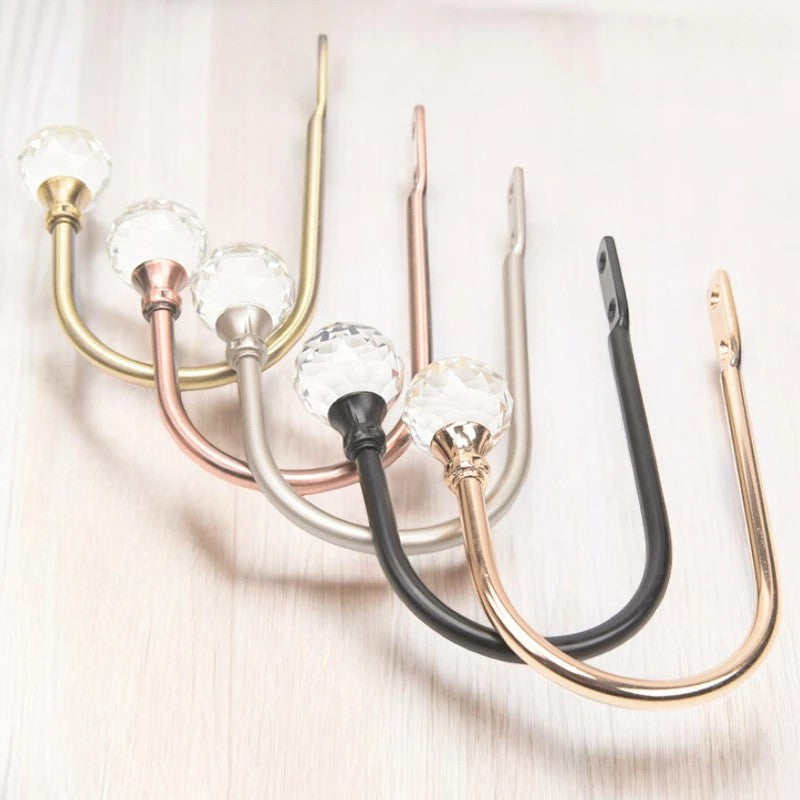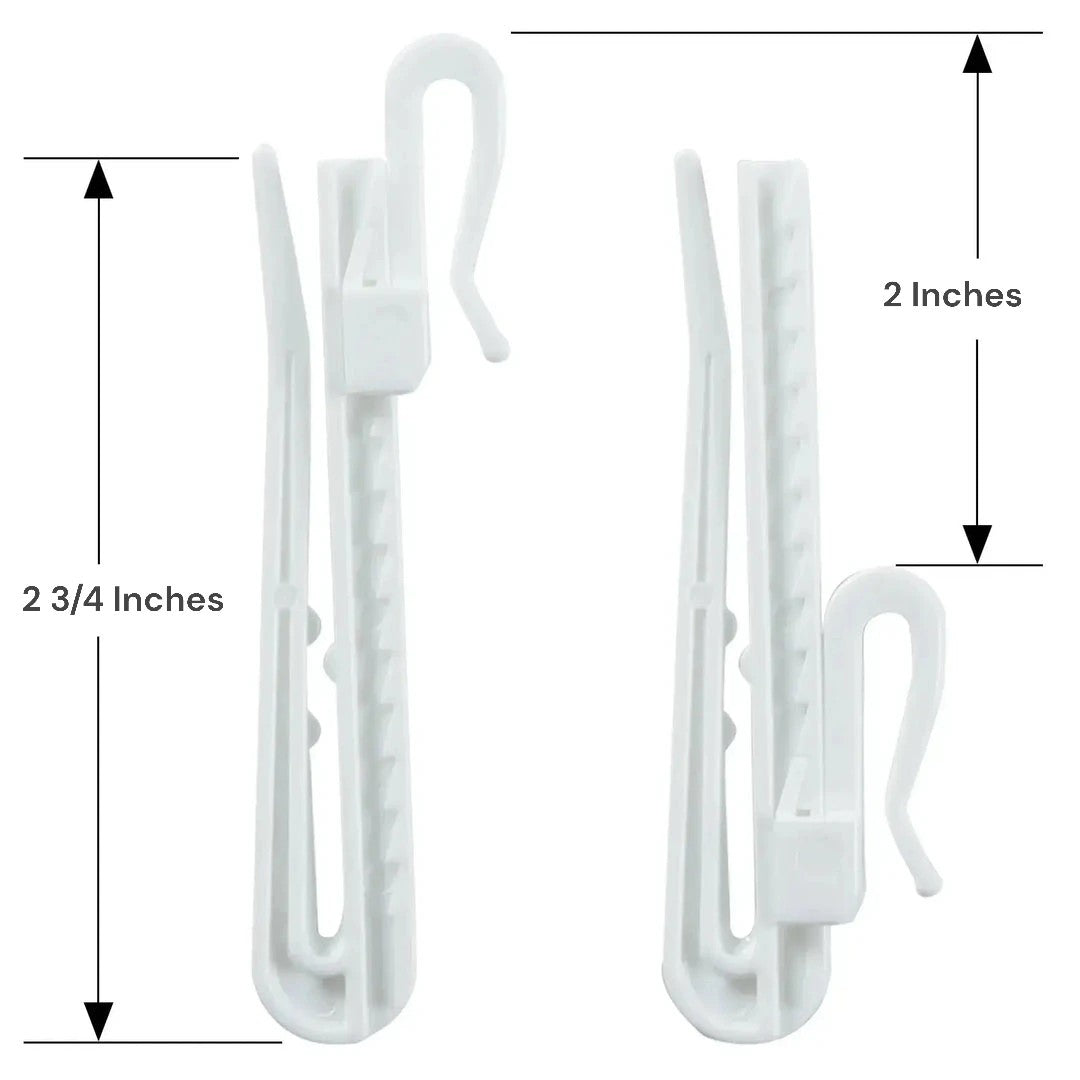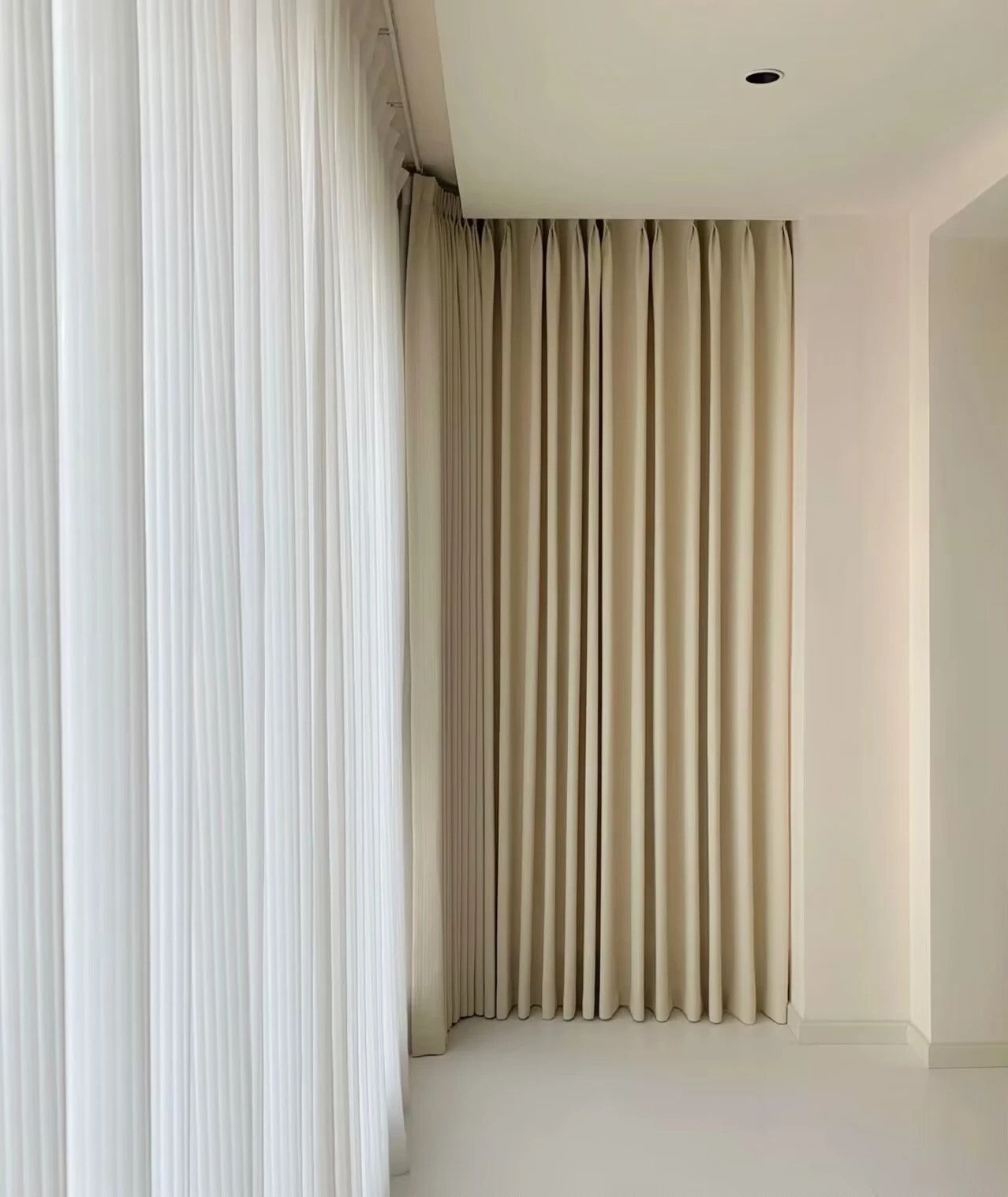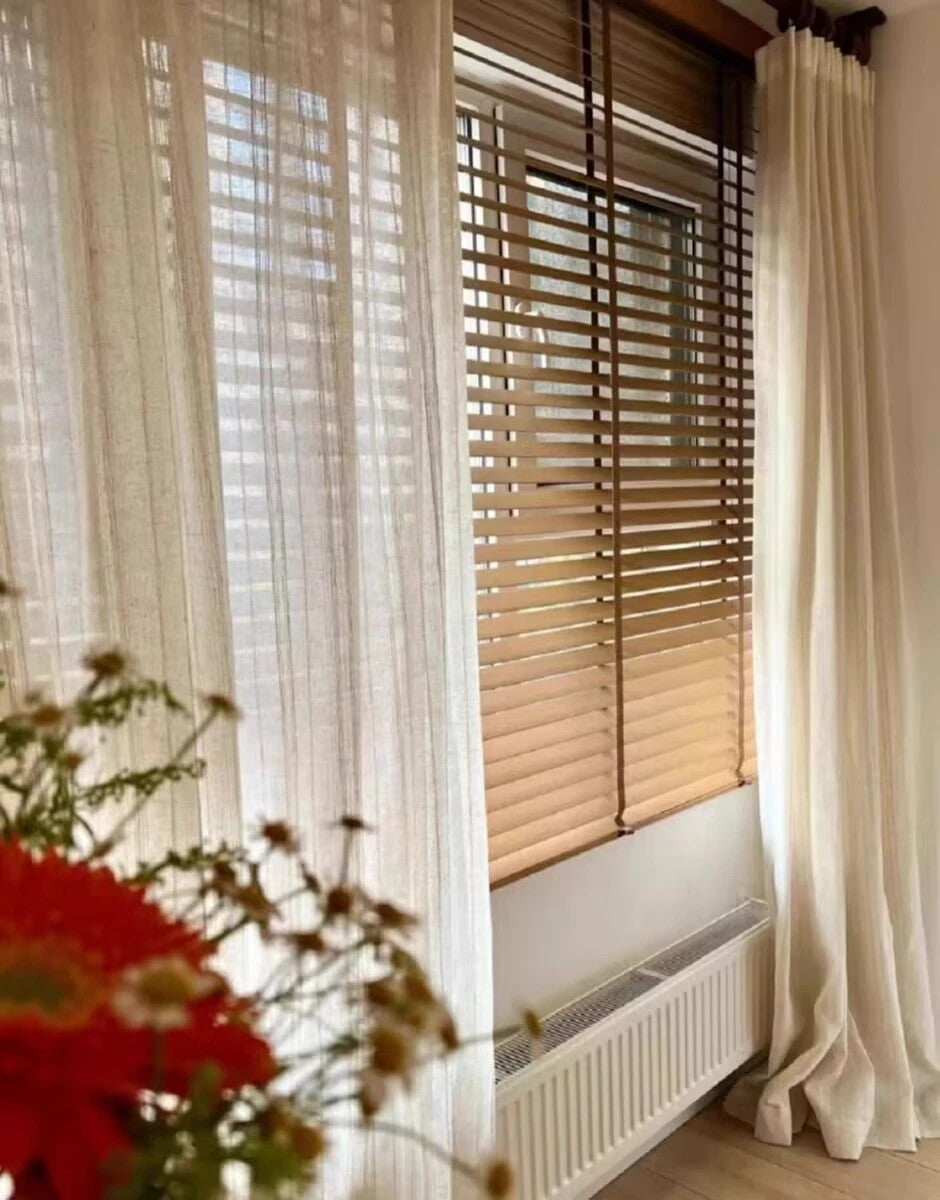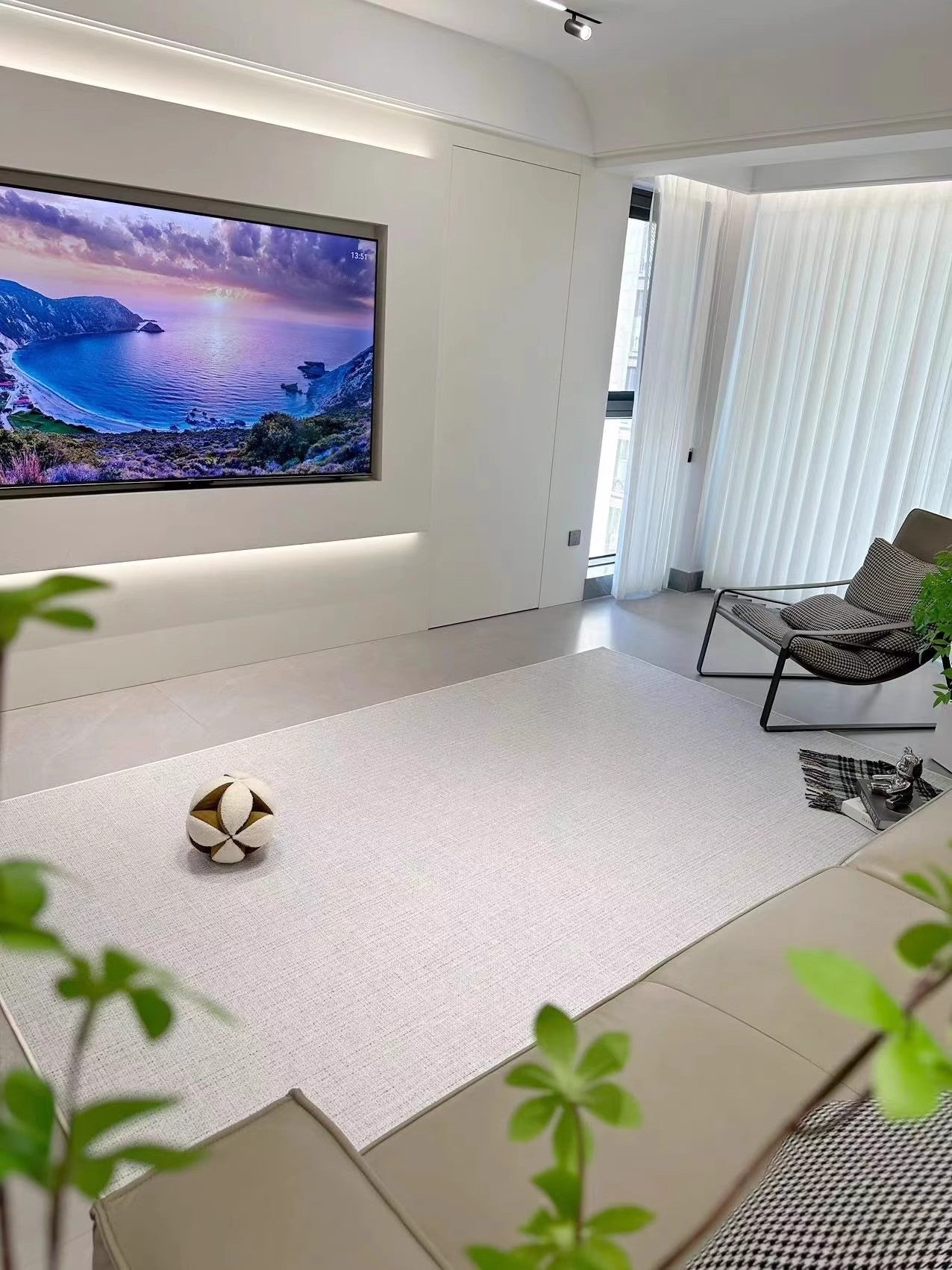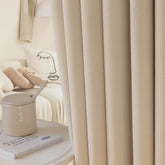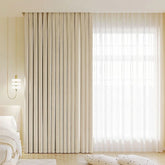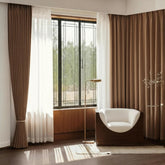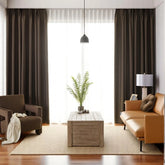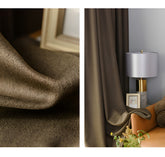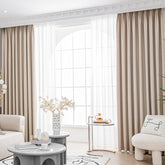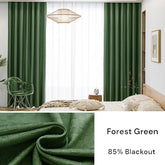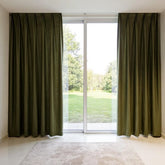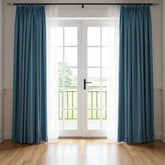The Drawbacks of Blackout Curtains
Last Update: March, 2025
Hi there! I'm James, the owner of Dolcewe.com. We've made custom curtains for over 10 years. Today, I want to talk about blackout curtains. They are great for many things. But they also have some problems you should know about.
Many people think blackout curtains are perfect. They block light and save energy. But after helping thousands of customers, I've seen the downsides too. Let me share what I've learned with you.
Key Takeaways
| Main Section | Key Takeaway |
|---|---|
| Sleep and Health Issues | Open your blackout curtains first thing each morning to reset your body's clock. Try a wake-up light alarm or timer-controlled curtain rods to help maintain healthy sleep cycles. |
| Practical Problems in Daily Use | Choose breathable blackout fabrics and leave a small gap between curtains and walls to prevent mold growth. Use a dehumidifier in damp rooms like bathrooms if using blackout curtains. |
| Installation and Safety Concerns | Install curtain rods with center supports to handle the extra weight of blackout curtains. Keep cords out of children's reach and consider professional installation for the best results. |
| Style and Light Control Limitations | Layer sheer curtains with blackout options for flexible light control throughout the day. Choose modern blackout designs or consider blackout liners instead of full blackout curtains for better style options. |
| Better Alternatives to Traditional Blackout Curtains | Try day-night curtains with dual layers for adjustable light filtering options. Custom-fit blackout curtains eliminate light leaks while smart curtains offer programmable control from your phone. |
| Health Benefits You Might Miss | Use blackout curtains only in bedrooms, not in main living spaces where natural light benefits mood. Open curtains during the day when you're home to get needed vitamin D and maintain healthy sleep signals. |
| Finding the Right Balance | Use blackout curtains only when needed, such as for night shift workers or afternoon naps. Consider different window treatments for different rooms based on their purpose and light needs. |
| Why Choose Dolcewe.com Custom Curtains | Our custom-fit curtains prevent light leaks and come in breathable, washable fabrics starting at just $26.99. With over 300 fabric options, you get perfect light control without sacrificing style or function. |
Sleep and Health Issues

Disrupted sleep cycles can happen with blackout curtains. Our bodies need natural light to wake up. When you use blackout curtains all the time, your body gets confused.
Your brain makes a sleep hormone called melatonin when it's dark. Blackout curtains can make your room too dark for too long. This tricks your body's clock.
Morning grogginess is more common with blackout curtains. Have you ever felt extra tired when waking up in a dark room? That's because your body hasn't gotten the signal that it's morning.
Vitamin D shortage is another problem. Your body needs sunlight to make vitamin D. This vitamin helps keep your bones strong. It also helps your mood stay good.
What you can do about it:
- Open your curtains first thing in the morning
- Use a wake-up light alarm clock
- Try timer-controlled curtain rods that open at set times
- Consider day-night curtains that let some light through
Practical Problems in Daily Use

Heat Buildup
Heat buildup happens with blackout curtains. The thick fabric that blocks light also traps heat. This can make your room too warm in summer.
Cleaning Challenges
Cleaning challenges are real with blackout curtains. The special coating can't be washed like normal curtains. Some need dry cleaning only. This costs more money and time.
Mold and Mildew
Mold and mildew can grow behind blackout curtains. The thick fabric blocks air flow. In damp rooms like bathrooms, this leads to mold problems.
What you can do about it:
- Choose breathable blackout curtains
- Leave a gap between curtains and walls
- Clean your curtains as directed on the label
- Use a dehumidifier in damp rooms
Installation and Safety Concerns

Heavy weight makes blackout curtains harder to hang. You need stronger curtain rods. Standard rods might bend or break under the weight. At Dolcewe, our curtain rods and tracks are study enough for heavy blackout curtains
Safety hazards can be a worry. Long, heavy curtains pose risks to small children and pets. They might pull on them and cause the rod to fall.
Hardware problems happen more often. The extra weight means more strain on brackets and rods. This leads to more repairs needed.
| Problem | Solution |
|---|---|
| Heavy curtains | Use reinforced curtain rods and strong brackets |
| Child safety risk | Choose cordless options or secure cords high up |
| Pulling hazards | Install tie-backs or holdbacks to keep curtains secured |
| Installation difficulty | Get proper anchors for your wall type |
What you can do about it:
- Install curtain rods with center supports
- Keep cords out of reach of children
- Choose curtains with the right size for your windows
- Use professional installation if needed
Style and Light Control Limitations
All-or-nothing light control is a common complaint. Standard blackout curtains either block all light or none. This leaves no middle ground.
Limited design options used to be a problem. Many blackout curtains came only in dark, plain colors. This made decorating harder.
Boxy appearance happens because the thick fabric doesn't drape as nicely. This can make your windows look stiff and bulky.
What you can do about it:
- Install a double rod system. Try layering sheer curtains with blackout curtains
- Look for blackout curtains with modern designs
- Consider blackout liners instead of full blackout curtains
- Choose custom options that match your decor
Better Alternatives to Traditional Blackout Curtains

Custom blackout solutions solve many problems. At Dolcewe.com, we make blackout curtains that fit your exact needs. This means better light control and style.
Day-night curtains give you more options. These special curtains have two layers. One blocks light and one filters it. You control how much light comes in.
Smart blinds and curtains are now available. These let you control light with your phone or voice. Some even open and close on a timer.
| Option | Light Blocking | Heat Control | Style Options | Price Range |
|---|---|---|---|---|
| Standard Blackout | Complete (100%) | Poor | Limited | $20-50 |
| Custom Blackout | Complete (100%) | Good | Extensive | $26.99+ |
| Day-Night Curtains | Adjustable | Very Good | Many | $30-70 |
| Smart Curtains | Programmable | Excellent | Growing | $100+ |
Health Benefits You Might Miss
Natural wake-up cycles help you feel better. When morning light hits your eyes, your body stops making melatonin. This helps you wake up feeling fresh.
Better mood comes from more daylight. Sunlight helps your brain make feel-good chemicals. Without enough light, some people feel sad.
Improved sleep quality happens with the right light balance. Your body sleeps best when it has clear day and night signals.
What you can do about it:
- Use blackout curtains only in bedrooms, not living spaces
- Open curtains during the day when you're home
- Choose curtains that block most but not all light
- Try timer-controlled curtains that open automatically
Finding the Right Balance

Part-time use is often the best approach. Use blackout curtains when you need them, like for night shift workers or afternoon naps.
Room-specific solutions make sense too. You might want full blackout in bedrooms but sheer curtains in living rooms.
Seasonal changes should guide your curtain use. In winter, open curtains during the day for warmth. In summer, close them to keep cool.
Our custom approach at Dolcewe.com helps you find balance. We make curtains that fit your windows perfectly. This means better light control with fewer drawbacks.
Why Choose Dolcewe.com Custom Curtains
I started this business because I saw people struggling with off-the-shelf curtains. Our custom curtains start at just $26.99. They solve many blackout curtain problems.
Perfect fit means no light leaks around the edges. This is where most standard blackout curtains fail.
Breathable fabrics reduce heat and mold issues. We choose materials that block light but still let air flow.
Washable options make cleaning easier. Many of our blackout fabrics can be washed at home.
Style variety gives you more choices. We have over 300 fabrics to match any room design.
Final Thoughts: Making the Right Choice
Blackout curtains have their place in home decor. They can be great for certain rooms and needs. But it's important to know their limits.
Do you need help finding the right curtain solution? Visit Dolcewe.com to see our custom options. We can help you avoid the common problems with blackout curtains.
Remember that the perfect window treatment balances light control, style, and health. Would you like blackout curtains that work better for your home? We're here to help you find them.
Have questions about what might work in your space? Drop us a message. Our team has helped thousands of customers find the perfect balance.
FAQ
What are the drawbacks of blackout curtains?
The drawbacks of blackout curtains include potential circadian rhythm disruption, higher cost compared to regular curtains, reduced natural light, fire hazards if not installed correctly, and the need to rely on electric lighting during the day.
How can blackout curtains impact health and well-being?
Blackout curtains can disrupt natural circadian rhythms, leading to sleep disturbances, mood imbalances, and potential vitamin D deficiency. The reduced airflow and increased humidity caused by blackout curtains can also create an environment conducive to mold and mildew growth.
Are there alternatives to blackout curtains?
Yes, there are alternatives to blackout curtains. Room darkening curtains, layering curtains, different curtain materials, and low-VOC options are some alternatives to consider.
How do blackout curtains contribute to sleep and energy efficiency?
Blackout curtains effectively block light, creating a dark and restful environment that promotes quality sleep. Their thermal insulation properties also contribute to energy efficiency by blocking out heat in the summer and retaining warmth in the winter.
How should blackout curtains be cleaned and maintained?
Blackout curtains should be regularly cleaned by vacuuming or using a microfiber cloth to remove surface debris. Some curtains are machine washable, but it's important to follow the manufacturer's instructions. Professional cleaning services may be necessary for certain curtain materials.



